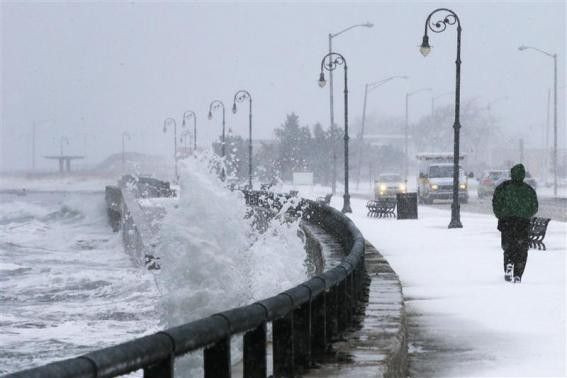The Netherlands creates world’s biggest man-made wave facility to test flood defences

Dutch scientists have constructed the world’s biggest man-made wave machine to find out if their country can cope with increasingly devastating floods. Called the Delta Flume, it can create the largest artificial waves in the world – anything from the choppy waters of stormy seas to a single tsunami surge. The facility, which will open in October 2015, cost 26 million euros (over AU$ 41 million) and took two years to build.
Located at the Deltares Research Institute in The Netherlands, the facility can hold 9 million litres of water and pump in from a reservoir at 1,000 litres a second. According to engineers, the machine has generated over 5 metres of artificial wave – its highest so far – but they are hoping to get some larger ones. Waves are created by a 10 metre-high steel wall that pushes the water back and forth, before traveling along a narrow 300 metre-long tank. Scientists put full-scale flood-defence technology such as dams, dykes and barriers to test their capabilities.
A global leader in flood management, The Netherlands has for years invested heavily in flood control projects. In addition to having two-thirds of their land at risk from deluge, the Dutch have learned their lesson from experiencing a catastrophic flood. In 1953, a high tide and treacherous weather combined to create a devastating storm surge in the North Sea, causing 1,500 square kilometres to be submerged underwater, killing nearly 2,000 people.
As a result, The Netherlands constructed Delta Works, a network of dams, locks, dykes and barriers to protect the most vulnerable parts of the country. However, coastal ecologists say that while The Netherlands is better protected than many countries, it still needs to future-proof its systems.
“Your flood risk protection measures need to be adaptive and not very rigid. You don't want to lock yourself in. For example, for the storm surge barrier there’s a bit of a challenge, because it is kind of rigid, so if there is large sea-level rise we need to adapt to it,” said coastal engineer Dr Van Wesenbeeck.
She added that there are other natural systems which are easier to adjust and can be built up quickly if required, such as sand dunes or the grass-covered dykes. These different kinds of systems will be put to the test in The Netherlands’s Delta Flume.
According to the 2013 United Nation’s International Panel on Climate Change report, global mean sea levels could rise by between 28 centimetres and 98 centimetres in 2100. In another study, published by scientists in the Proceedings of the National Academy of Sciences, 600 million people are estimated to be flooded annually, which could cost $100 trillion per year globally.
Contact the writer at feedback@ibtimes.com.au or tell us what you think below.





















